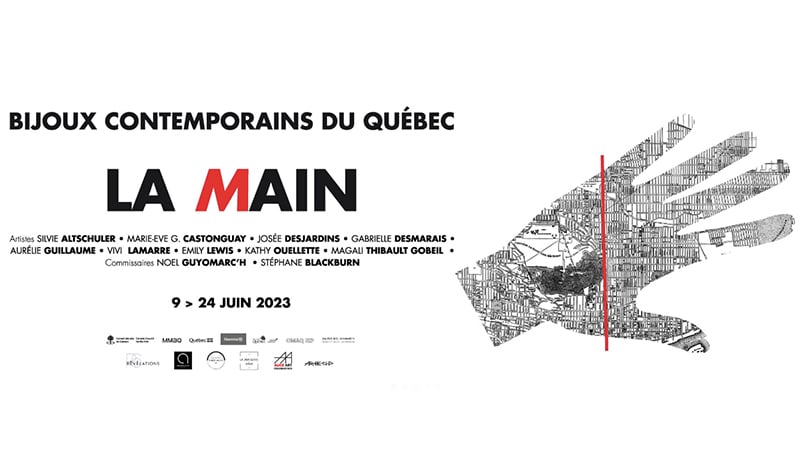
Remarkable Contemporary Jewellery at the Montreal Museum of Fine Arts
In Conversation with Diane Charbonneau, co-curator of the exhibition

The exhibition has been extended until March 8, 2015.
In Conversation with Diane Charbonneau, co-curator of the exhibition
Jewellery, a rapidly evolving branch of art, is still relatively unfamiliar to the uninitiated. Remarkable Contemporary Jewellery brings together some thirty Quebec and international jewellery designers whose creations testify to the richness of this practise. Seeking to reinvent jewellery, these artists are developing new methods of fabrication and interpretation. An interview with the expert and co-curator Noel Guyomarc’h illuminates the present state of the art.
What is meant by “contemporary jewellery”?
I define it as the outcome of an artistic vision, a questioning and reflection on the world, on the immediate environment, on the discipline and its history, no matter which materials and techniques are employed. A contemporary piece of jewellery is a means of communication freed from references to the past, springing from the imagination and intent of a creator who questions the very idea of jewellery, its wearability, its symbolic value, its preciousness: the artist confronts the object.
What is the main distinction between conventional and contemporary jewellery?
The difference between these two notions is a matter of conceptualization. Contemporary jewellery is conceived according to a reflection on and exploration of the practice and ideas of jewellery: the choice of materials, formats and techniques is unconstrained. Artists can benefit from the contemporary jewellery courses offered in the visual arts departments of some universities, where they can develop not only technical expertise but also the concepts and visual language to express their creative potential.
No longer confined to gold, silver and precious stones, today’s jewellery often employs unusual materials. This break with conventional materials involves a corresponding break with traditional techniques, does it not?
The exploration of uncommon materials in the creation of jewellery proceeds apace. No sooner do new and more effective materials – resin, adhesives, acrylic stains among others – appear on the market than they are employed. The materials of other artistic practices – porcelain, wood, glass and leather – can be found too. In my opinion, their use, adapted and applied to jewellery, also enriches these other practices. As in contemporary art, the latest technologies, including the use of 3D and laser printing for engraving, cutouts and soldering, contribute to a renewal of the discourse. These techniques are interesting, for they can be applied both to experimentation and to traditional processes.
What are the current trends in contemporary jewellery?
There is so much activity in this young artistic discipline that it is difficult to discern the different trends. Beyond the artists’ messages and aesthetic intentions, their visual expression creates nuances that may exist within the community without causing divisions. The techniques have become as diverse as the shapes and materials employed. Today’s jewellery is of two kinds: the pieces created by artists who prefer to work with the materials considered “conventional” in the jewellery world, and those made by creators who chooses to work with unconventional materials. These two trends feed off of each other and offer a wide range of outstanding works.
Montreal Museum of Fine Arts Magazine, September to December /14




